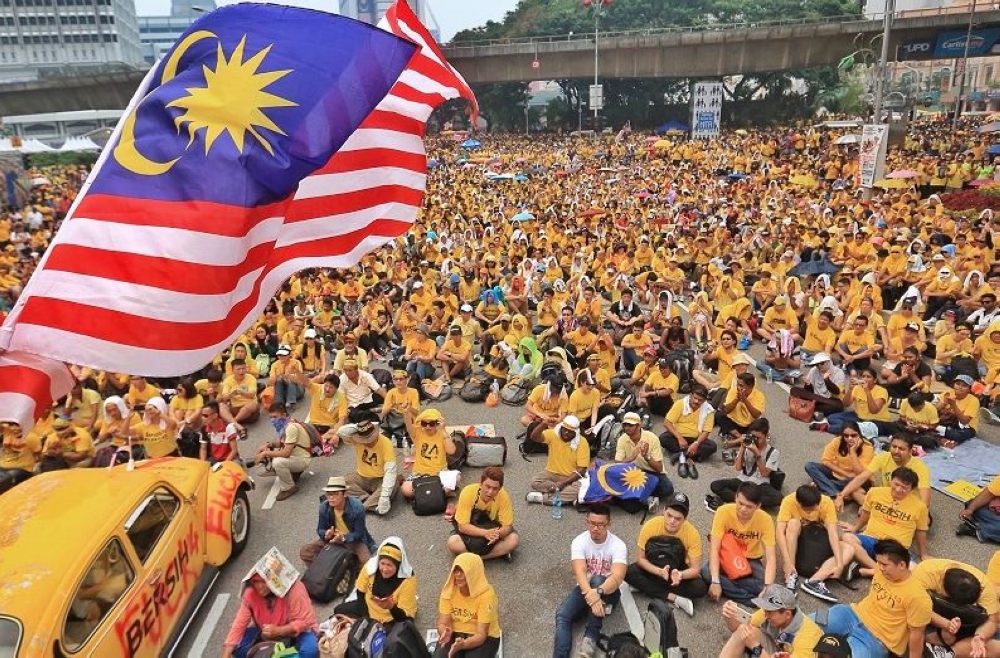Swatch seizures: Can Malaysia’s Home Ministry ban watches as ‘publications’? Lawyers explain

Watches are displayed for sale at a Swatch store at Setia City Mall in Shah Alam May 25, 2023. — Picture by Yusof Mat Isa
Friday, 26 May 2023 7:00 AM MYT
KUALA LUMPUR, May 26 — The Home Ministry recently seized over 170 Swatch watches using the Printing Presses and Publications Act (PPPA) 1984, but does this law give the ministry the power to ban and confiscate the timepieces?
And did the Home Ministry follow legal procedures when it seized the watches, allegedly for having lesbian, gay, bisexual and transgender (LGBT) “elements”? What can the Swiss company Swatch do?
Malay Mail spoke to several lawyers to discuss how the PPPA might apply to the recent Swatch watch seizures in Malaysia.
1. What is the PPPA?
The PPPA is a law that gives the home minister the powers to ban “undesirable publications,” and which also enables the Home Ministry to prohibit their import and distribution, or to seize such banned publications, among other things.
So, for the Home Ministry to act using the PPPA against any item, they would have to fall under the category of “publication”.

Friday, 26 May 2023 7:00 AM MYT
KUALA LUMPUR, May 26 — The Home Ministry recently seized over 170 Swatch watches using the Printing Presses and Publications Act (PPPA) 1984, but does this law give the ministry the power to ban and confiscate the timepieces?
And did the Home Ministry follow legal procedures when it seized the watches, allegedly for having lesbian, gay, bisexual and transgender (LGBT) “elements”? What can the Swiss company Swatch do?
Malay Mail spoke to several lawyers to discuss how the PPPA might apply to the recent Swatch watch seizures in Malaysia.
1. What is the PPPA?
The PPPA is a law that gives the home minister the powers to ban “undesirable publications,” and which also enables the Home Ministry to prohibit their import and distribution, or to seize such banned publications, among other things.
So, for the Home Ministry to act using the PPPA against any item, they would have to fall under the category of “publication”.

Lawyer New Sin Yew said it was possible for a watch to be considered as a ‘publication,’ due to the very wide definition of the term under the PPPA’s Section 2. — File picture by Miera Zulyana
2. Can the Home Ministry take action over watches in the first place?
The short answer: Possibly.
Human rights lawyer New Sin Yew, who has handled PPPA court cases previously, said it was possible for a watch to be considered as a “publication,” due to the very wide definition of the term under the PPPA’s Section 2.
“It’s not the watch per se that is the publication, it is what was printed on the watch. Let’s say certain texts have been printed on the watch, that would make it a publication within the meaning of the PPPA,” he told Malay Mail, referring to (b) and (c) of word “publication” under the PPPA’s Section 2.
Under Section 2, a “publication” is defined under (b) as “all written or printed matter and everything whether of a nature familiar to written or printed matter or not containing any visible representation”, and is defined under (c) as “anything which by its form, shape or in any manner is capable of suggesting words or ideas”.
New said Section 2’s definition of “publication” is problematic as it covers “virtually everything under the sun” and could restrict space for public discourse of ideas. He suggested more safeguards be introduced to limit opportunities for abuse, such as by providing the opportunity to be heard or having the minister provide explanations before making a ban, also suggesting that the minister be required to produce evidence of actual “clear and present danger” to factors such as public security or public order.
Constitutional lawyer K. Shanmuga, who has also handled PPPA cases in the past, said “it will be an arguable point whether the very wide definitions in (b) and (c) are constitutional”, and said the Swatch watches would “probably come within those definitions” if they are found to be constitutional.

2. Can the Home Ministry take action over watches in the first place?
The short answer: Possibly.
Human rights lawyer New Sin Yew, who has handled PPPA court cases previously, said it was possible for a watch to be considered as a “publication,” due to the very wide definition of the term under the PPPA’s Section 2.
“It’s not the watch per se that is the publication, it is what was printed on the watch. Let’s say certain texts have been printed on the watch, that would make it a publication within the meaning of the PPPA,” he told Malay Mail, referring to (b) and (c) of word “publication” under the PPPA’s Section 2.
Under Section 2, a “publication” is defined under (b) as “all written or printed matter and everything whether of a nature familiar to written or printed matter or not containing any visible representation”, and is defined under (c) as “anything which by its form, shape or in any manner is capable of suggesting words or ideas”.
New said Section 2’s definition of “publication” is problematic as it covers “virtually everything under the sun” and could restrict space for public discourse of ideas. He suggested more safeguards be introduced to limit opportunities for abuse, such as by providing the opportunity to be heard or having the minister provide explanations before making a ban, also suggesting that the minister be required to produce evidence of actual “clear and present danger” to factors such as public security or public order.
Constitutional lawyer K. Shanmuga, who has also handled PPPA cases in the past, said “it will be an arguable point whether the very wide definitions in (b) and (c) are constitutional”, and said the Swatch watches would “probably come within those definitions” if they are found to be constitutional.

Lawyer Nizam Bashir says merely because the watches are capable of constituting a ‘publication’ does not mean that Swatch has run afoul of the provisions of the PPPA. — Picture by Hari Anggara
3. But wait, does that mean the Home Ministry’s Swatch seizures were legal?
Short answer: No. Because the home minister has not gazetted a ban on the Swatch watches yet, as required by the PPPA itself.
Constitutional and civil rights lawyer Nizam Bashir similarly cited (c) for “publication” under Section 2, saying the wide definition means the PPPA could apply to the Swatch watches as products that attempt to “suggest words or ideas”.
“However, merely because the watches are capable of constituting a ‘publication’ does not mean that Swatch has run afoul of the provisions of the PPPA,” he told Malay Mail.
Nizam said the PPPA’s Section 7 provides a framework, where the home minister must gazette a ban on a publication first, but noted that the home minister has yet to do so.
“To put it succinctly, without such a gazette being done, any raid and confiscation of the Swatch watches is unlawful,” he said.
So, the procedure would be that the Home Ministry would have to first ensure a ban is gazetted, then a search warrant has to be obtained first under the PPPA’s Section 16(1) — besides exceptions under Section 16(2) and Section 20 — before a seizure can be carried out, Nizam said.
Apart from the requirement to gazette the ban, Nizam said the PPPA did not make it necessary for prior notice to be given before such raids and seizures are carried out.
New said Home Ministry officers need to apply for a search warrant first, but said one of the requirements for the courts to even grant a search warrant is that there must first be a “prohibited publication” or a ban on the publication.
Explaining the PPPA’s Section 16, Shanmuga said a magistrate may issue a search warrant if banned publications are suspected to be at a particular place, but a senior authorised officer (usually a Home Ministry or police officer) may enter without a search warrant if he believes there is a banned publication and delay in getting a search warrant would result in the search being frustrated.
But this is only if the home minister has already prohibited or banned the publications through an order in the government gazette, he said.
Under Section 17, such officers could open any package if he believes its contents are “liable” to be prohibited (in other words, which he believes the home minister will eventually ban). Section 18 empowers officers who are searching a place (under Section 16) or examining a package (under Section 17) to seize publications which they suspect to be liable to be prohibited or banned.
“If no ban is eventually made, or the ban is held to be unlawful, then the Government would be liable to return the items seized and may have to pay damages to the owner of the items,” Shanmuga said.

3. But wait, does that mean the Home Ministry’s Swatch seizures were legal?
Short answer: No. Because the home minister has not gazetted a ban on the Swatch watches yet, as required by the PPPA itself.
Constitutional and civil rights lawyer Nizam Bashir similarly cited (c) for “publication” under Section 2, saying the wide definition means the PPPA could apply to the Swatch watches as products that attempt to “suggest words or ideas”.
“However, merely because the watches are capable of constituting a ‘publication’ does not mean that Swatch has run afoul of the provisions of the PPPA,” he told Malay Mail.
Nizam said the PPPA’s Section 7 provides a framework, where the home minister must gazette a ban on a publication first, but noted that the home minister has yet to do so.
“To put it succinctly, without such a gazette being done, any raid and confiscation of the Swatch watches is unlawful,” he said.
So, the procedure would be that the Home Ministry would have to first ensure a ban is gazetted, then a search warrant has to be obtained first under the PPPA’s Section 16(1) — besides exceptions under Section 16(2) and Section 20 — before a seizure can be carried out, Nizam said.
Apart from the requirement to gazette the ban, Nizam said the PPPA did not make it necessary for prior notice to be given before such raids and seizures are carried out.
New said Home Ministry officers need to apply for a search warrant first, but said one of the requirements for the courts to even grant a search warrant is that there must first be a “prohibited publication” or a ban on the publication.
Explaining the PPPA’s Section 16, Shanmuga said a magistrate may issue a search warrant if banned publications are suspected to be at a particular place, but a senior authorised officer (usually a Home Ministry or police officer) may enter without a search warrant if he believes there is a banned publication and delay in getting a search warrant would result in the search being frustrated.
But this is only if the home minister has already prohibited or banned the publications through an order in the government gazette, he said.
Under Section 17, such officers could open any package if he believes its contents are “liable” to be prohibited (in other words, which he believes the home minister will eventually ban). Section 18 empowers officers who are searching a place (under Section 16) or examining a package (under Section 17) to seize publications which they suspect to be liable to be prohibited or banned.
“If no ban is eventually made, or the ban is held to be unlawful, then the Government would be liable to return the items seized and may have to pay damages to the owner of the items,” Shanmuga said.

The colours of the line of Swatch watches appear to feature the rainbow colours matching the Pride flag. — Screengrab from Swatch website
4. What should the home minister’s ban look like? Can it just say “watch with LGBT elements”?
Short answer: If a ban on publications is made and gazetted, it must be specific, not general.
Nizam said “no raid or seizure can be carried out without a gazetted ban”, and that the gazette must make it clear what is being prohibited, since penalties could be imposed for PPPA breaches once there is a gazetted ban.
While he felt there was no need for such a ban to specify each watch model, Nizam said it would not be enough to state a general ban such as “watches with LGBT elements”, and the specific elements being prohibited should be specified.
“‘Watches with LGBT elements’ is not precise enough to my mind. So, perhaps if it were more clear and used a phrase like ‘watches with design, motifs or colours aligned or associated with the LGBT pride movement’,” Nizam said, when asked for an example.
Asked if the home minister could gazette a general ban on watches “with LGBT elements” or if it should be specific to each type of watch, Shanmuga said such a ban “must be specific”.
“Constitutional law and international human rights law require laws that restrict free speech to be specific, clear and proportionate to the harm that is being avoided. Some clear indication of what is to be prohibited must be contained in the ban,” Shanmuga said.

4. What should the home minister’s ban look like? Can it just say “watch with LGBT elements”?
Short answer: If a ban on publications is made and gazetted, it must be specific, not general.
Nizam said “no raid or seizure can be carried out without a gazetted ban”, and that the gazette must make it clear what is being prohibited, since penalties could be imposed for PPPA breaches once there is a gazetted ban.
While he felt there was no need for such a ban to specify each watch model, Nizam said it would not be enough to state a general ban such as “watches with LGBT elements”, and the specific elements being prohibited should be specified.
“‘Watches with LGBT elements’ is not precise enough to my mind. So, perhaps if it were more clear and used a phrase like ‘watches with design, motifs or colours aligned or associated with the LGBT pride movement’,” Nizam said, when asked for an example.
Asked if the home minister could gazette a general ban on watches “with LGBT elements” or if it should be specific to each type of watch, Shanmuga said such a ban “must be specific”.
“Constitutional law and international human rights law require laws that restrict free speech to be specific, clear and proportionate to the harm that is being avoided. Some clear indication of what is to be prohibited must be contained in the ban,” Shanmuga said.

Lawyer K. Shanmuga said if the ban is held to be unlawful, then the Government would be liable to return the items seized and may have to pay damages. — Picture by Choo Choy May
6. Can’t just ban publications, unless it fits in the Section 7 box
Yes, the home minister has powers to completely ban “undesirable publications” or to impose conditions on the importing, selling or distribution of such “undesirable publications”, but it has to be based on Section 7(1) of the PPPA.
Section 7(1) has a long list of when the home minister may impose such bans through a gazetted order, including when the minister is satisfied that the publication is prejudicial or likely to be prejudicial to “public order, morality, security”, or is likely to “alarm public opinion”, or is or is likely to go against any law, or is or likely prejudicial to “public interest or national interest”.
But despite such wide discretion to the home minister to ban items which are likely to be prejudicial to public order or morality or “likely to alarm public opinion”, Shanmuga said the courts had in many cases said they could still review the home minister’s exercise of powers to ban.
“Even if the section says that the minister has “absolute” discretion, there are many previous cases (especially of bans on books) which state that this discretion is still subject to judicial oversight,” he said.
Noting that the Federal Constitution’s Article 10(1)(a) guarantees freedom of expression to all Malaysians, Shanmuga said Article 10(2)(a) allows laws to be made to restrict freedom of expression only on specific grounds such as “public order or morality”, but not if there was merely alarming of public opinion.
Asked if the PPPA can be used to take action on watches based on whether it features words such as “LGBT” or if it only features rainbow colours matching the Pride flag, Shanmuga said he did not think either scenario would amount to a threat to “public order or morality,” which would be a permitted ground to restrict freedom of expression in Malaysia.
“I do not think in either case they are a danger to public order or morality. A threat to public order means something that is an instigation to violence or an immediate threat of violence. Whereas, matters that go against morality are ordinarily pornographic items.
“To merely ban items that seek to advocate and encourage equality of treatment to all people, regardless of their gender and sexual identity, is in fact trying to stifle legitimate public advocacy for a socio-political cause,” Shanmuga said.

6. Can’t just ban publications, unless it fits in the Section 7 box
Yes, the home minister has powers to completely ban “undesirable publications” or to impose conditions on the importing, selling or distribution of such “undesirable publications”, but it has to be based on Section 7(1) of the PPPA.
Section 7(1) has a long list of when the home minister may impose such bans through a gazetted order, including when the minister is satisfied that the publication is prejudicial or likely to be prejudicial to “public order, morality, security”, or is likely to “alarm public opinion”, or is or is likely to go against any law, or is or likely prejudicial to “public interest or national interest”.
But despite such wide discretion to the home minister to ban items which are likely to be prejudicial to public order or morality or “likely to alarm public opinion”, Shanmuga said the courts had in many cases said they could still review the home minister’s exercise of powers to ban.
“Even if the section says that the minister has “absolute” discretion, there are many previous cases (especially of bans on books) which state that this discretion is still subject to judicial oversight,” he said.
Noting that the Federal Constitution’s Article 10(1)(a) guarantees freedom of expression to all Malaysians, Shanmuga said Article 10(2)(a) allows laws to be made to restrict freedom of expression only on specific grounds such as “public order or morality”, but not if there was merely alarming of public opinion.
Asked if the PPPA can be used to take action on watches based on whether it features words such as “LGBT” or if it only features rainbow colours matching the Pride flag, Shanmuga said he did not think either scenario would amount to a threat to “public order or morality,” which would be a permitted ground to restrict freedom of expression in Malaysia.
“I do not think in either case they are a danger to public order or morality. A threat to public order means something that is an instigation to violence or an immediate threat of violence. Whereas, matters that go against morality are ordinarily pornographic items.
“To merely ban items that seek to advocate and encourage equality of treatment to all people, regardless of their gender and sexual identity, is in fact trying to stifle legitimate public advocacy for a socio-political cause,” Shanmuga said.

In 2015, the home minister made an order that Bersih 4 yellow T-shirt was a prohibited publication on grounds of that it was likely to be prejudicial to public order. — File picture by Saw Siow Feng
7. Do you know the home minister once banned shirts in yellow?
New said he believes the Home Ministry took action on the Swatch watches over their colours rather than text printed on them, saying that the question then arises whether “a colour or a combination of colours can be considered a publication” which fit in the grounds for the home minister to ban publications under Section 7(1).
“In 2015, the home minister made an order that Bersih 4 yellow T-shirt was a prohibited publication on grounds of that it was likely to be prejudicial to public order, likely to be prejudicial to security, likely to be contrary to any law and likely to be prejudicial to national interest. That case was unique because the home minister not only made an order that any publication containing the words Bersih 4 was prohibited, he also stated the colour yellow in his order,” New said.
New was referring to the home minister’s prohibition order gazetted on August 28, 2015, where he made a nationwide ban on publications in the form of “Any yellow coloured clothing and which contains the words ‘Bersih4’” and in the form of “Any other printed material and pamphlet which leads to Bersih 4 rally”.
“The Court of Appeal ultimately declared the home minister’s order as irrational,” New said, referring to the August 29, 2016 court decision that quashed the ban on the yellow Bersih 4 shirts.
“So, I suppose the present home minister should bear in mind that if he were to make any order on the Swatch Pride Collection, it would be challenged on the basis that it was irrational. To add, it would also be unconstitutional,” New said.
8. What can Swatch do?
In the Swatch case where there was no gazetted ban, Nizam said the seizures of the watch would be “wrong in law and capable of being questioned in a court of law”.
He agreed the court cases involving bookstore chain Borders and publisher ZI Publications Sdn Bhd in relation to Irshad Manji’s “Allah, Liberty and Love” may be relevant. (In the Borders case, the Federal Territories Islamic Religious Department (Jawi) had raided one of its bookstores and seized copies of the book on May 23, 2012, days before the home ministry’s May 29 gazette of a ban on the book. The Court of Appeal in December 2014 said it was unfair to prosecute a Borders bookstore manager over the books, when there was no gazette of the ban yet or any public notification that the book was unlawful. It also said the book ban cannot take effect retrospectively.)
Asked about Swatch’s legal options now, Nizam said: “Swatch should seek legal advice and appoint appropriate legal counsels to represent them in a court of law.”
New described the Home Ministry’s raid of Swatch stores as “blatantly” illegal, since they were carried out without any order from the home minister to ban the watches as a “prohibited publication”. He said there was also no government gazette of any such ban.
New said Swatch could go to court to “apply for judicial review against the actions of the officers responsible and seek an order for the return of the watches as well as ask for damages.”
When contacted by Malay Mail, Swatch Malaysia had on May 24 declined comment on the watch seizures, but said its “legal department is taking care of it”.
7. Do you know the home minister once banned shirts in yellow?
New said he believes the Home Ministry took action on the Swatch watches over their colours rather than text printed on them, saying that the question then arises whether “a colour or a combination of colours can be considered a publication” which fit in the grounds for the home minister to ban publications under Section 7(1).
“In 2015, the home minister made an order that Bersih 4 yellow T-shirt was a prohibited publication on grounds of that it was likely to be prejudicial to public order, likely to be prejudicial to security, likely to be contrary to any law and likely to be prejudicial to national interest. That case was unique because the home minister not only made an order that any publication containing the words Bersih 4 was prohibited, he also stated the colour yellow in his order,” New said.
New was referring to the home minister’s prohibition order gazetted on August 28, 2015, where he made a nationwide ban on publications in the form of “Any yellow coloured clothing and which contains the words ‘Bersih4’” and in the form of “Any other printed material and pamphlet which leads to Bersih 4 rally”.
“The Court of Appeal ultimately declared the home minister’s order as irrational,” New said, referring to the August 29, 2016 court decision that quashed the ban on the yellow Bersih 4 shirts.
“So, I suppose the present home minister should bear in mind that if he were to make any order on the Swatch Pride Collection, it would be challenged on the basis that it was irrational. To add, it would also be unconstitutional,” New said.
8. What can Swatch do?
In the Swatch case where there was no gazetted ban, Nizam said the seizures of the watch would be “wrong in law and capable of being questioned in a court of law”.
He agreed the court cases involving bookstore chain Borders and publisher ZI Publications Sdn Bhd in relation to Irshad Manji’s “Allah, Liberty and Love” may be relevant. (In the Borders case, the Federal Territories Islamic Religious Department (Jawi) had raided one of its bookstores and seized copies of the book on May 23, 2012, days before the home ministry’s May 29 gazette of a ban on the book. The Court of Appeal in December 2014 said it was unfair to prosecute a Borders bookstore manager over the books, when there was no gazette of the ban yet or any public notification that the book was unlawful. It also said the book ban cannot take effect retrospectively.)
Asked about Swatch’s legal options now, Nizam said: “Swatch should seek legal advice and appoint appropriate legal counsels to represent them in a court of law.”
New described the Home Ministry’s raid of Swatch stores as “blatantly” illegal, since they were carried out without any order from the home minister to ban the watches as a “prohibited publication”. He said there was also no government gazette of any such ban.
New said Swatch could go to court to “apply for judicial review against the actions of the officers responsible and seek an order for the return of the watches as well as ask for damages.”
When contacted by Malay Mail, Swatch Malaysia had on May 24 declined comment on the watch seizures, but said its “legal department is taking care of it”.
The letter AND intent of the law was clearly to allow restriction of writings and media intended to promote undesirable causes and activities.
ReplyDeleteA long, long , long stretch of the bow to call a rainbow coloured watch a "publication".